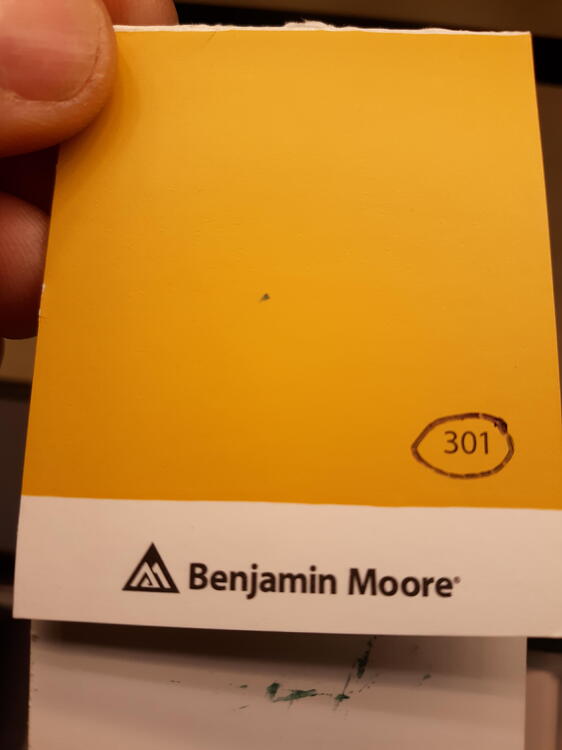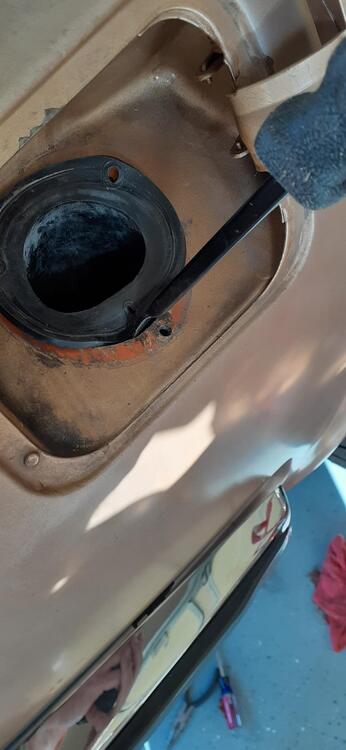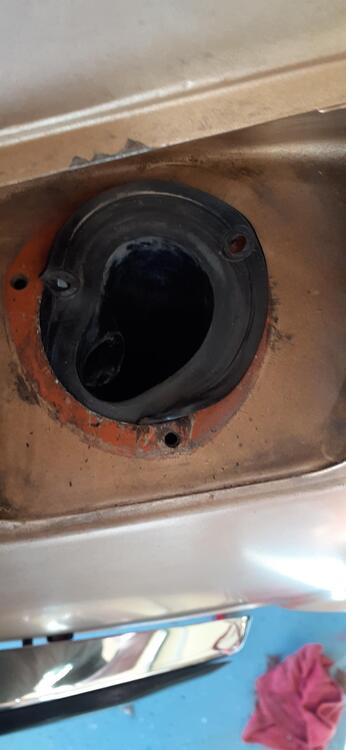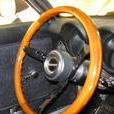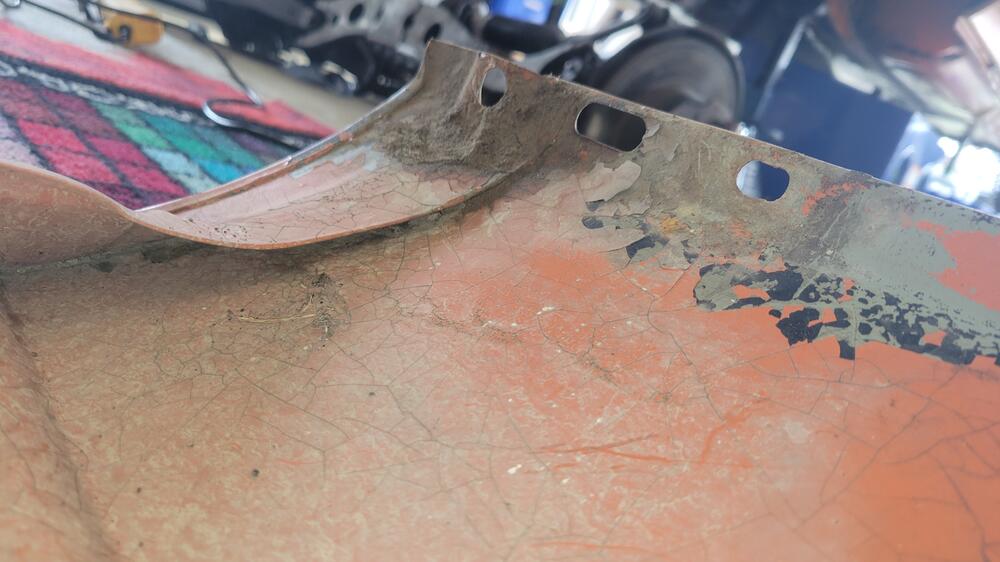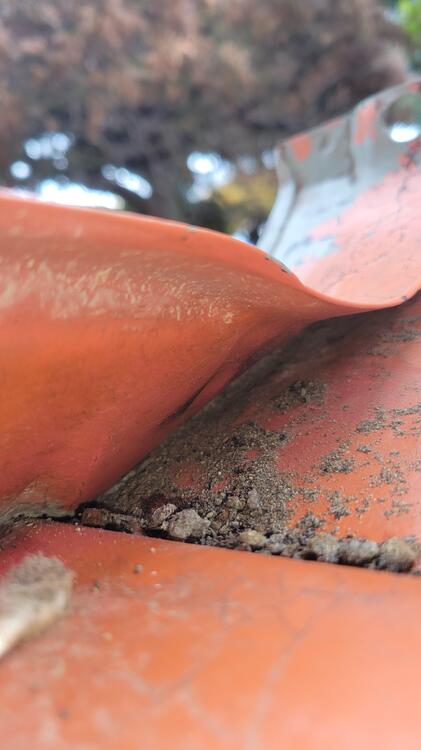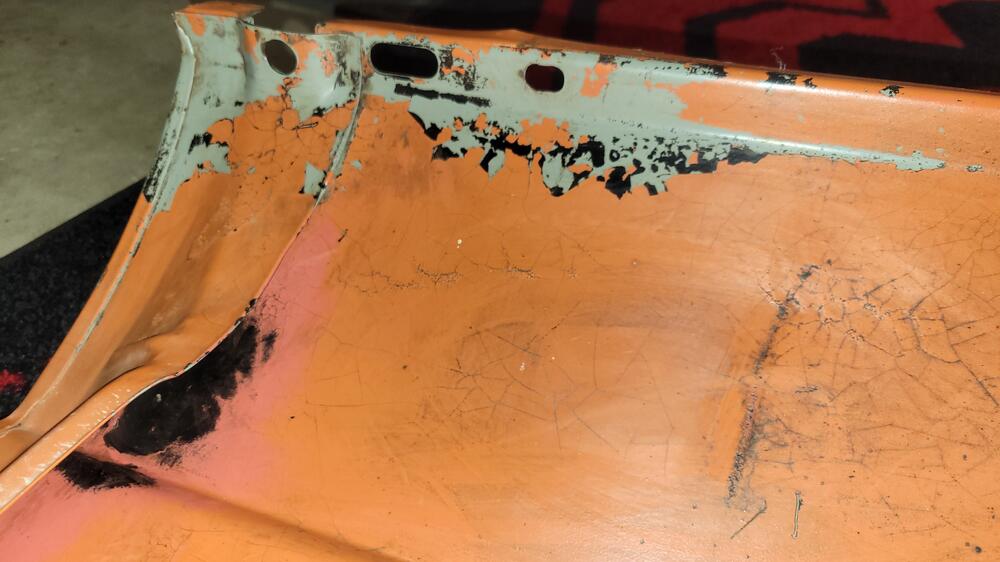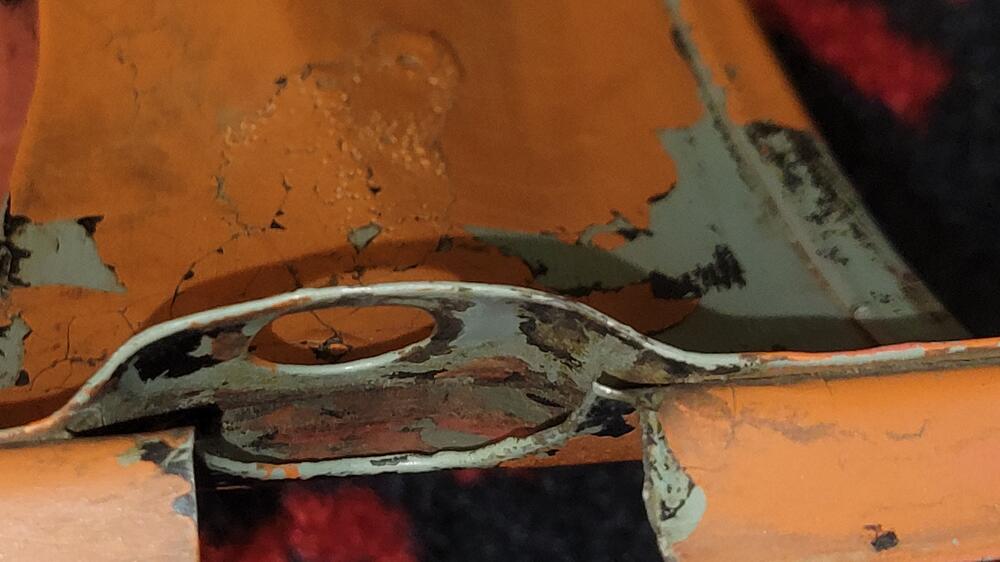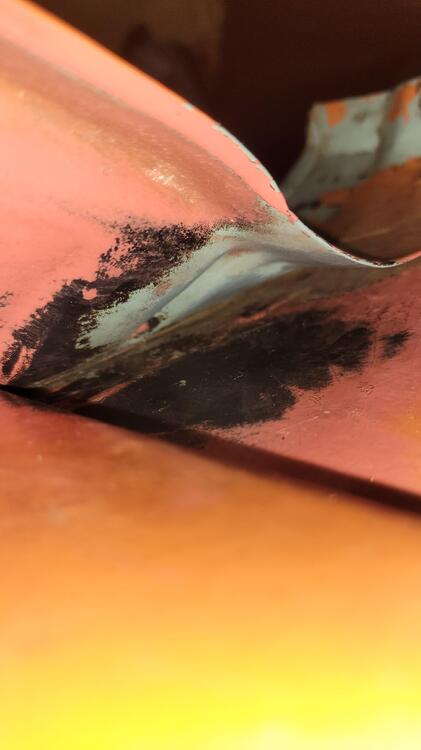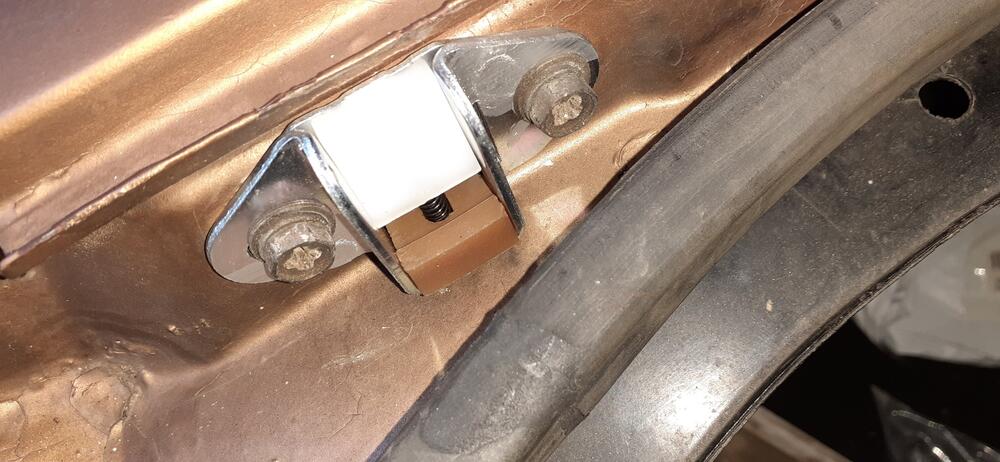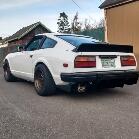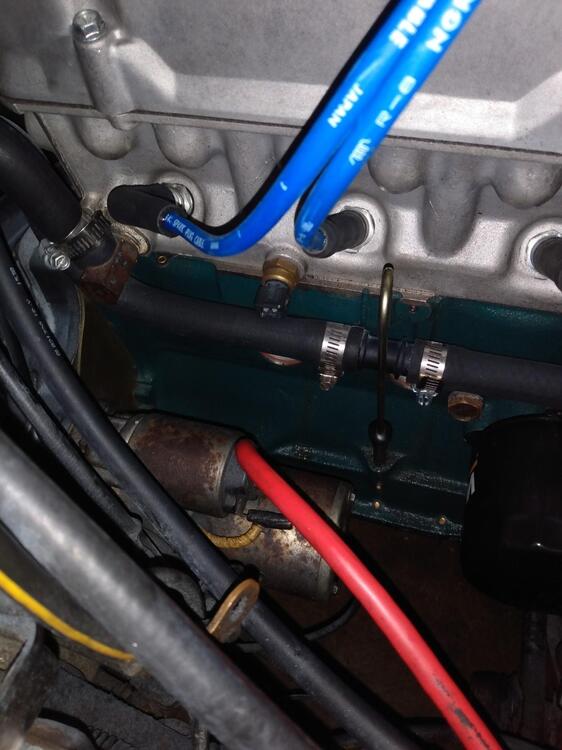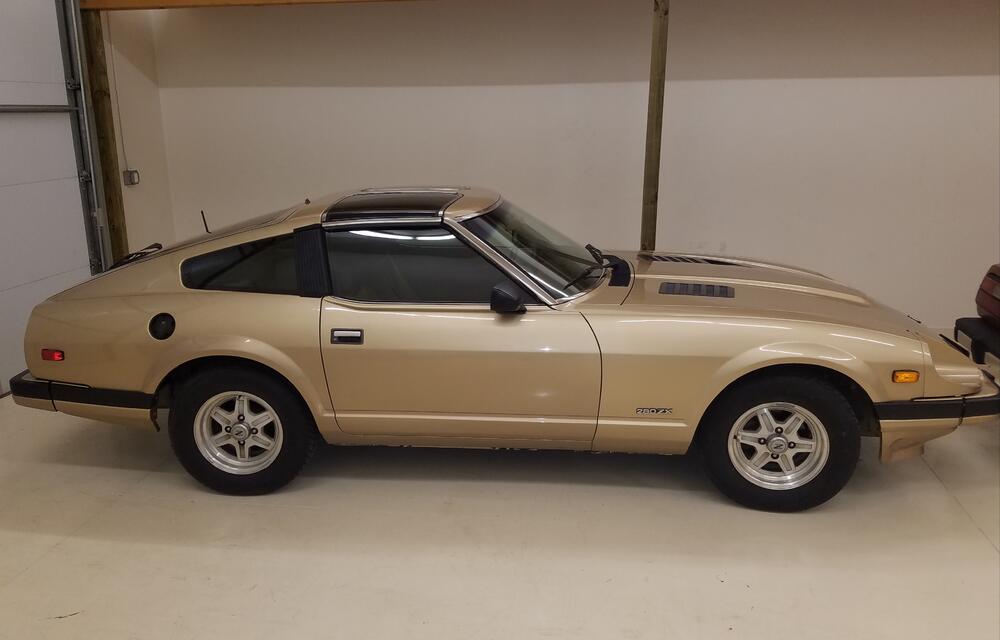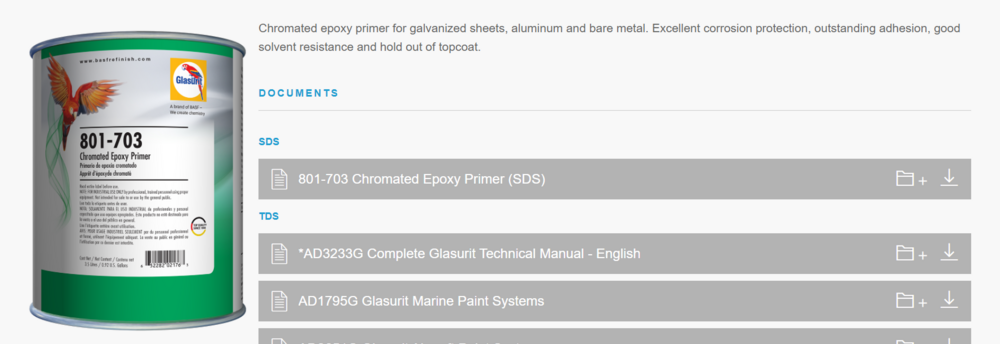On my first 240z, with new fenders back in 1993, I sprayed chromated primer into the area we've been talking about. I did not immerse the corner of the fender in the primer.
For my 240z undergoing restoration currently, I used the existing fenders. They had some rust in this area. I cut out the rust and welded in replacement metal. I also unfolded the metal that wraps around the reinforcement panel because some rust had occurred within. As a result, the area captured by the folded rear edge of the fender had "expanded". This happens when metal rusts. It expands at the same time. So, I unfolded the bottom two or three inches where the outer panel wraps around the reinforcement panel. I manually removed the rusted metal that was loose from within the pinch, and then re-pinched the reinforcement panel. This time, I poured the epoxy primer into the inside of the reinforcement panel. And separately, I applied seam sealer to the outside of the pinch to seal the other side of it.
So, that corner of the fender has been "soaked" in chromated epoxy primer on the inside, and seam sealed on the other side. And of course, now it has a fabricated panel that hopefully will keep debris from settling into this trouble spot.
The chromated epoxy primer I have been using is pretty bad-arse. That said, again, I do not recommend relying on it (plus top coat) alone to save this area of our cars from rusting.









